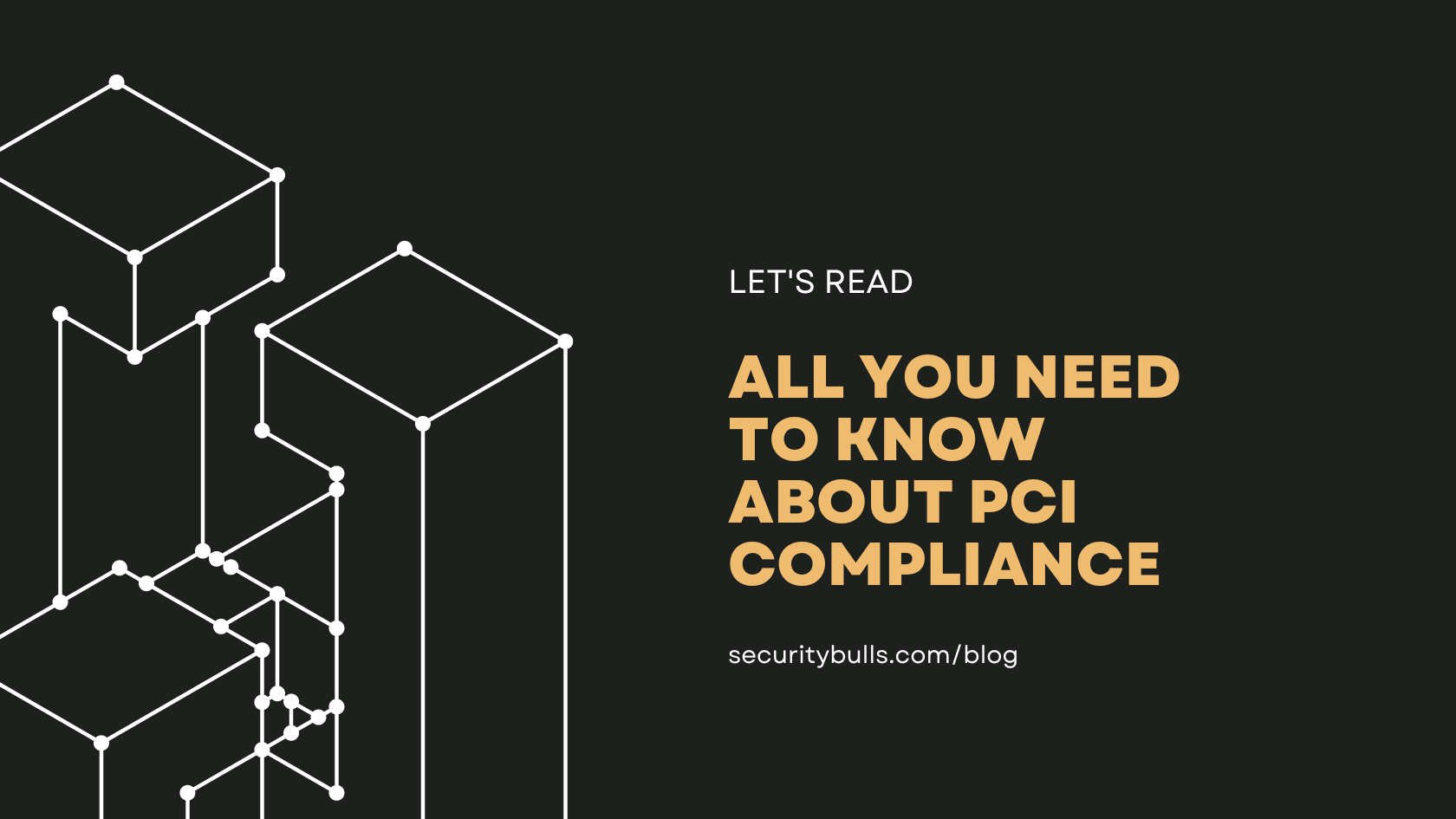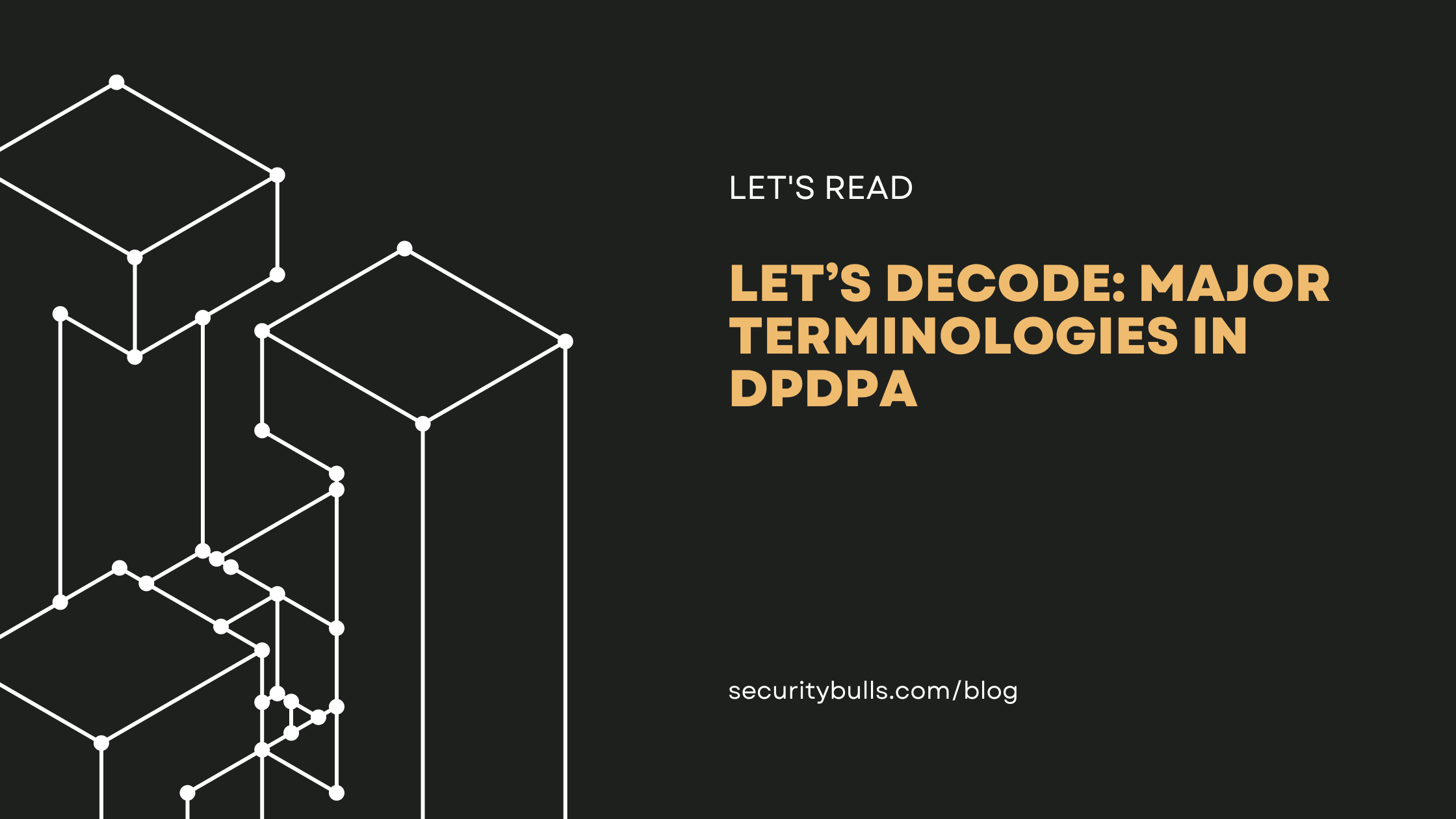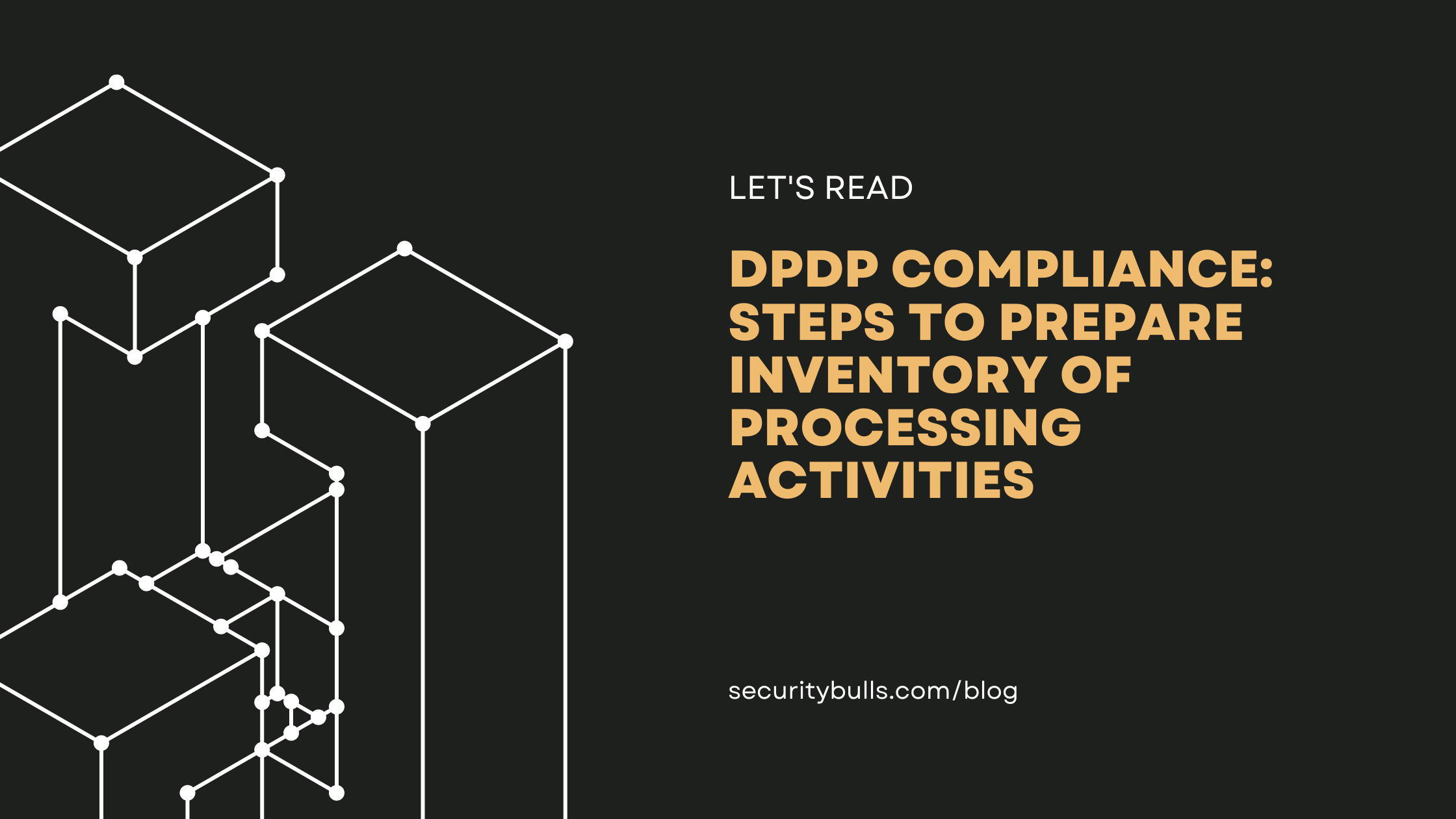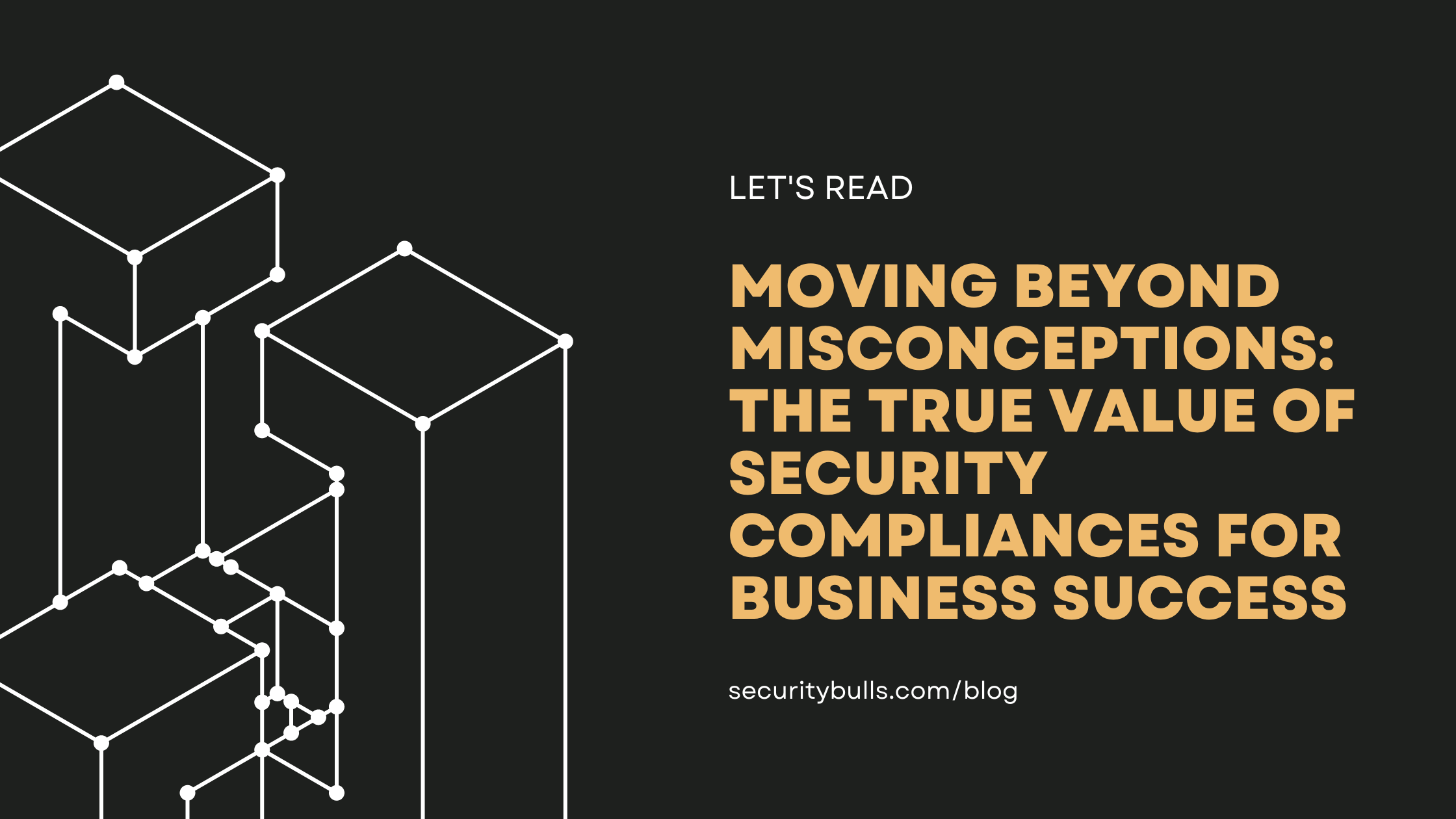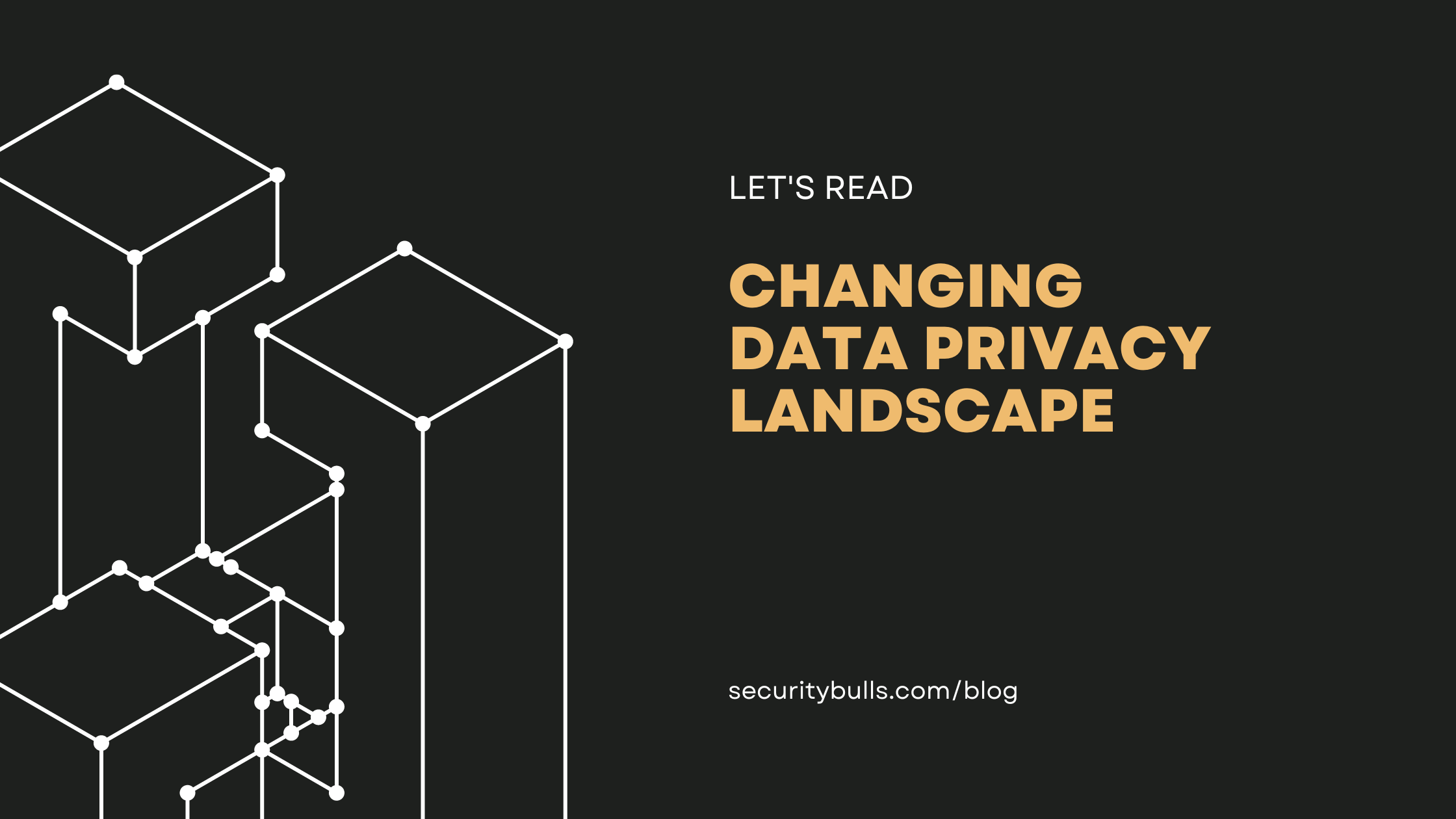If you own an e-commerce business or use credit cards to accept payments, chances are you’ve heard the term “PCI compliant.” But you probably don’t know what it means.
Securitybulls is here to tell you all you need to know about PCI Compliance.
What is PCI DSS Compliance?
PCI stands for “Payment Card Industry,” and it’s the first part of two-part acronym that refers to security guidelines for businesses that accept credit cards. The full acronym is PCI DSS, which stands for “Payment Card Industry Data Security Standard.”
PCI DSS provides businesses that accept credit cards with guidelines and an actionable framework to protect cardholder data.
It ensures all sellers safely and securely accept, store, process, and transmit cardholder data (that is your customers’ credit card information) during a credit card transaction.
PCI is very prescriptive. It says not only that you need to be secure but it tells you how to become secure. If you study PCI in detail you will find out that it is more about enhancing your security than compliance.
When does PCI becomes applicable?
If you obey the following services in your business then you must comply with PCI standards, if you have:
- Point-of-sale systems
- Card readers
- Store networks and wireless access routers
- Payment card data storage and transmission
- Payment card data stored in paper-based records
- Online payment applications and shopping carts
If your business accepts payment cards with any of the five members of the PCI SSC credit card brands (American Express, Discover, JCB, MasterCard, and Visa), then you are required to be PCI compliant — even for businesses with very little volume, because PCI compliance is not dictated by the volume of transactions. It applies to both the administrative and technological side of running a business and is updated regularly.
There are four different levels of compliance; these levels depends on the transaction volume of trader during a 12-month period.
The requirements range from establishing data security policies for your business and employees to removing card data from your processing system and payment terminals.
How does PCI help your business?
Just like your financial statements require audit procedures, your customer’s credentials require PCI compliance. Businesses of all types, small and large, are prone to many sorts of vulnerabilities of data breaches. The problem is attackers know the majority of small businesses don’t have enough protection and many times don’t even implement basic security solutions. It is a set of 12 specific requirements that cover six different goals. With due regards, there are 6 categories of PCI regulations. You must:
Secure Card Processing Network
- Install firewalls to protect sensitive data, like credit card numbers.
- Change the default passwords and any other default security settings – When you receive hardware, software, system updates or security from vendors, update passwords and default security immediately.
Protect All Cardholder Information
- If you store card data, put proper security and access controls around any cardholder data you store.
- Use encryption when transmitting data – Make sure any cardholder information transmitted across public or open networks is properly encrypted to industry standards.
Protect Your Systems Against Malware
- Make sure you have proper, regularly updated antivirus and other security software in place.
- Maintain secure systems and applications, including patching any vulnerabilities.
Put Access Control Measures in Place
- Limit employee access to cardholder data – Ensure only authorized personnel have access.
- Track who has access to cardholder data by using unique IDs for each user.
- Restrict physical access – Ensure only authorized employees can access physical cardholder data.
Monitor and Test Your Networks
- Monitor and track anyone who has access to cardholder data and network and what they are doing with that data.
- Test your security systems and procedures for flaws or vulnerabilities.
Create and Maintain an “Information Security” Policy
- Create, maintain, and share an information security policy that clearly sets out how your organization deals with PCI-DSS and the responsibilities of employees and contractors.
So basically the goals of PCI are things like build and maintain a secure network, protect card holder data and regularly monitor and test the networks. That’s the main standard.
Conclusion
To sum up, PCI DSS standards apply to all types of companies that ask for credit card information. The main goal of the compliance is to protect the privacy and security of sensitive card data by delivering recommendations on how to secure online business.
The PCI Council deems the pass mark is compliance with 100 percent of criteria. Because of this complicated responsibility, many larger companies choose to work with a PCI-compliance consultant on standards and how to meet these PCI-compliant level requirements. PCI is an ongoing process and responsibility, so you need to add a security strategy to your business. Analyze your website and update it regularly to make sure that all vulnerabilities that could expose cardholder data are fixed.
